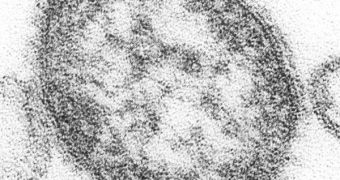Rubeola, or measles, is one of the diseases that vaccination managed to almost eradicate from the civilized world. The condition is caused by infections with a paramyxovirus of the genus Morbillivirus, whose mechanisms of action have thus far remained hidden. A new study just shed light on them.
Researchers at the Mayo Clinic say that they were able to gain new insight into how the viral agent manages to infiltrate a healthy cell in its host body, and then begin the necessary processes to completely take over that cell.
It would appear that the secret to understanding this lies on the surface of cells, which contain proteins and receptors that seem to facilitate the viruses' infections. Particular proteins on the cellular membrane allow some viral proteins to be twisted in the correct position to begin infection.
According to team leader Roberto Cattaneo, PhD, infection occurs in a flurry of motion that is so beautiful it resembles a ballroom dance. The consequences are however not as pleasing.
Cattaneo, who holds an appointment as a molecular biologist at Mayo, published the results of the new investigation in the latest online issue of the esteemed scientific journal Nature Structural & Molecular Biology, Science Daily reports.
The attachment proteins of the measles virus, and other respiratory viruses that share the same pathways, play the most important role in securing a successful infection, the group says.
Therefore, these molecules, and the connections they share with receptors on targeted cells, could make up a novel target for treatment. Preventing the connections from occurring basically stops infection.
This is very important considering that the virus infects more than 10 million people every single year, of which 197,000 die. Though targeted for eradication, the microorganism always finds some way of rebounding, and infecting new segments of the population.
“It was known that the viral attachment proteins always come in pairs, and recently it became clear that two pairs form a quartet,” Dr. Cattaneo says of how the virus attacks.
“Pairs initially face each other, and we show here that the upper bodies separate when the dance begins. We suggest that they then engage a partner from the other pair of the quartet, while the legs are still dancing with those of the original partner,” he adds.
Targeting this ensemble with disruptive chemicals could make it a lot easier for researchers to destroy the virus, and thus raise the chances of it being completely eradicated within our lifetime.

 14 DAY TRIAL //
14 DAY TRIAL //